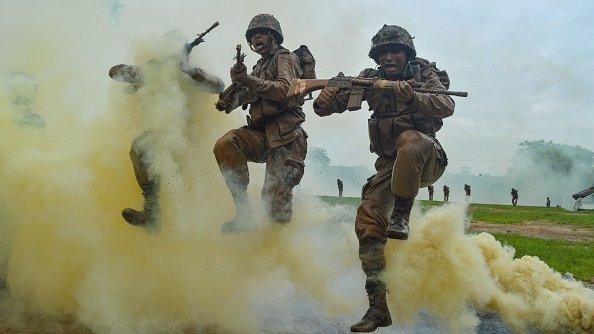INS Vikrant: Inside India’s newly-commissioned aircraft carrier
- Published
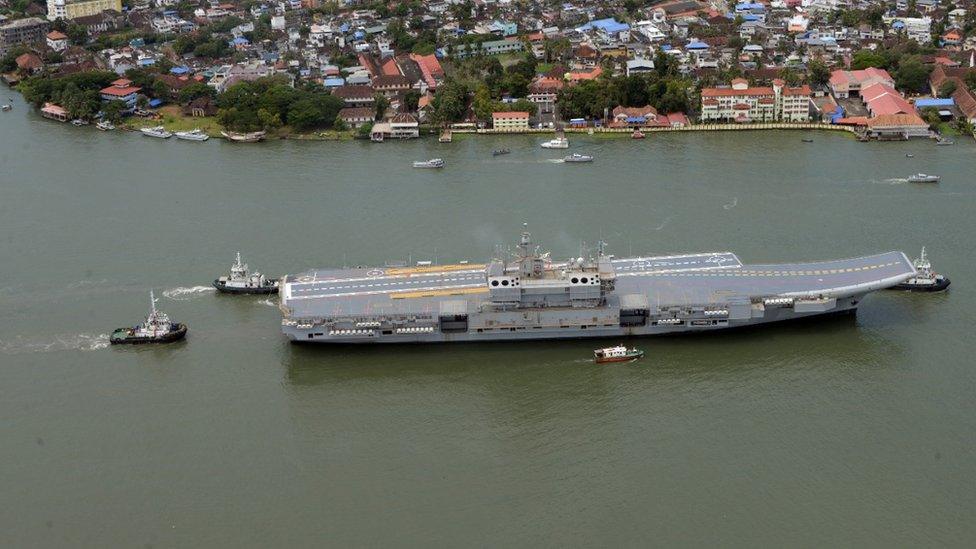
Vikrant is India's first indigenously-built aircraft carrier
India has commissioned its first indigenously-built aircraft carrier, Vikrant, at a ceremony in the southern state of Kerala. The BBC's Jugal Purohit took a tour of the vessel ahead of its induction into the Indian navy.
On Friday morning, the 45,000-tonne Vikrant got the prefix INS (Indian Naval Ship) at a formal commissioning ceremony, attended by Prime Minister Narendra Modi.
It is a moment that was 13 years in the making.
The vessel - 262m (860ft) long and almost 60m (197ft) tall - is the first aircraft carrier India has designed and built on its own. It has the capacity to hold 30 fighter planes and helicopters.
Mr Modi called the carrier "a floating city" and the "symbol of indigenous potential".
"With INS Vikrant, India has joined the list of countries which manufacture huge aircraft carriers with indigenous technology. It has filled the country with a new confidence," he said at the commissioning ceremony.
India's other aircraft carrier, INS Vikramaditya, can carry more than 30 aircraft. The UK Royal Navy's HMS Queen Elizabeth can carry about 40 and the US Navy's Nimitz class carriers can accommodate more than 60 aircraft.
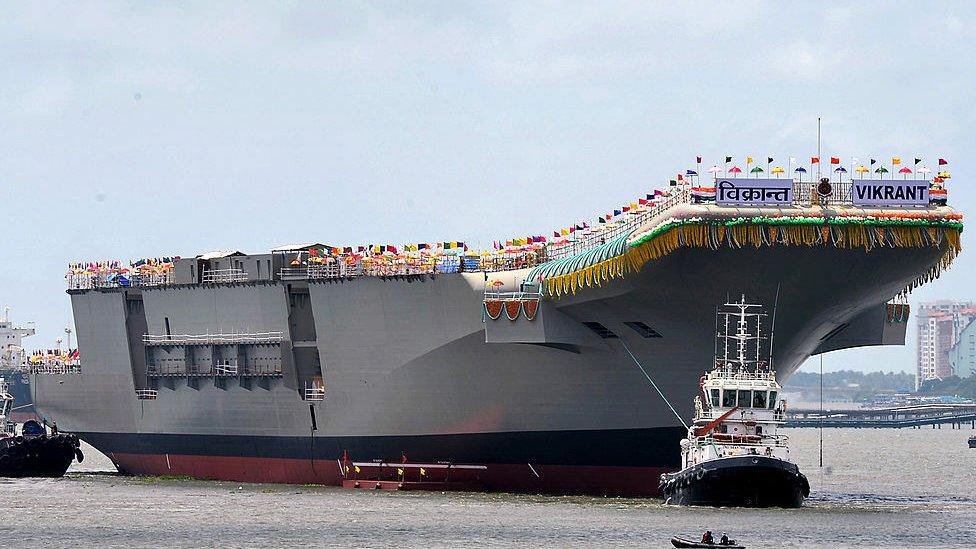
Vikrant was launched in 2013 before extensive trials began
Vikrant, which cost around 200bn rupees ($2.5bn; £2.1bn), was expected to be inducted into the navy by 2017. But the second phase of its construction was beset by delays.
But the ship's commissioning is still a historic moment for India, which will now join a select group of countries capable of building such a vessel. It's also a shot in the arm for Mr Modi's plans to boost domestic defence manufacturing.
The name Vikrant (which means courageous) is also special - it was what India's first aircraft carrier, bought from the UK and commissioned in 1961, was called. The first INS Vikrant was a major symbol of national pride and played an important role in several military operations - including the 1971 war with Pakistan - before being decommissioned in 1997.
After Friday's commissioning, the new Vikrant will sail across both Indian and international waters, accompanied by a fleet of frigates, destroyers and submarines to protect it.
Inside the ship
At present, Vikrant is at the government-owned Cochin Shipyard in Kerala state - where the ship was built and where the commissioning ceremony was held.
Once it's in service, it will eventually be the workplace - and home - for 1,700 crew members.
Ahead of the ceremony, there were technicians everywhere - fixing cables, polishing the interiors and making sure everything was in shape for the commissioning.
Teeming with crew, journalists and visitors, the insides of the ship felt like an unending complex of noisy workshops.
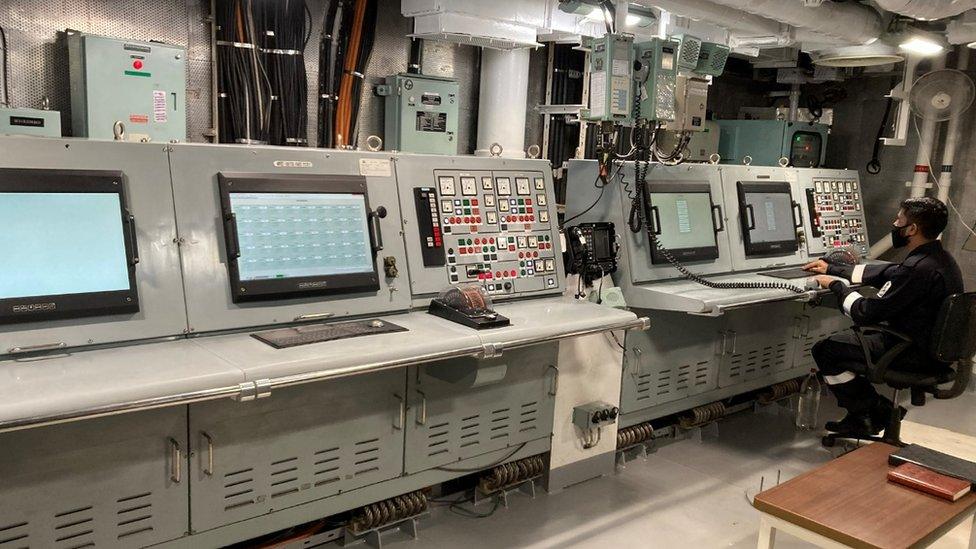
The Throttle Control Room, from where the gas turbine engines will be operated
An officer showed us around the Throttle Control Room - "the heart of the ship".
"From here, the gas turbine engines can be operated, which is how this floating city moves," Lieutenant-Commander Sai Krishnan, a senior engineering officer, said. The four engines on board together build up 88MW of power - enough to supply a city, he added.
There are three galleys, or pantries, which have coffee-vending machines, tables and chairs, and places to keep large utensils.
"If you combine these galleys, close to 600 personnel can have their meals at the same time," an officer said.
The ship also has a 16-bed hospital, two operating theatres and intensive care units.
In the hangar, two Russian-origin aircraft - a MiG-29K fighter and a Kamov-31 early warning helicopter - are placed towards the rear end.
"Think of this like a parking space, with a team that looks after maintenance and repairs. From here, special lifts take the aircraft to the flight deck for flying operations," said Lieutenant-Commander Vijay Sheoran.
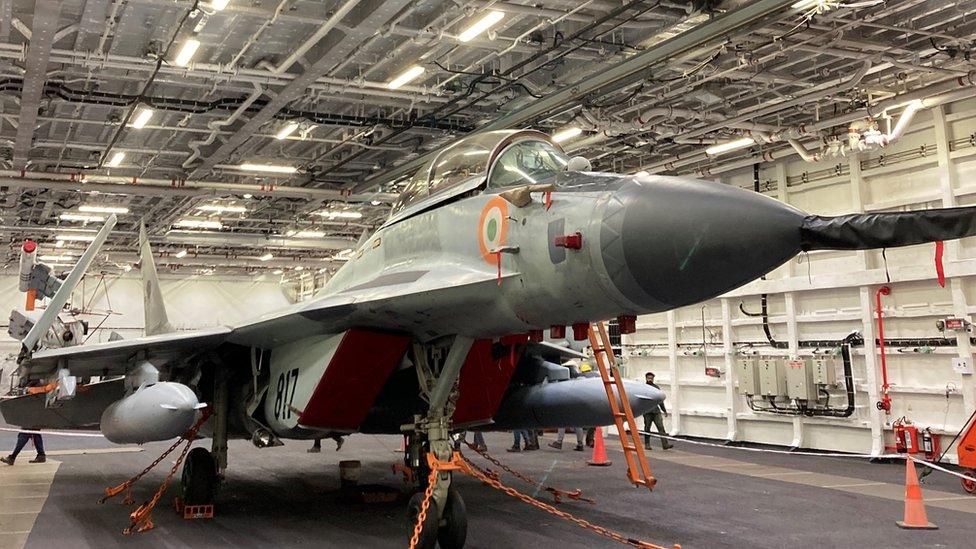
A MiG-29K inside the hangar on board
The navy plans to test intensive flying operations from the ship later this year.
"Our flight deck size is nearly 12,500sqm - almost as big as two-and-a-half hockey fields - and we can operate 12 fighter planes and six helicopters at once," said Lieutenant-Commander Siddharth Soni, the flight deck officer.
The big picture
Though India will now have two aircraft carriers - INS Vikramaditya and Vikrant - many navy chiefs have said publicly that it needs at least one more. But the government hasn't given funds for this yet.
Retired Vice-Admiral AK Chawla, who until recently had supervised Vikrant's progress, says the choice is between acting now or being left out. He cites the example of China, which has expanded its maritime power by "building aircraft carriers at an amazing pace".
"You can't build carriers overnight, it takes time and, therefore, it's very important that we have more ships like Vikrant which can protect our fleet, travel far and knock out enemy ships before they can get to the aircraft carrier or to other ships," he says.
Between 2012 and 2022, Beijing has commissioned two aircraft carriers, external and started work on a third. It also has the world's largest navy in terms of numbers - although the US is still ahead in terms of capabilities.
Madhu Nair, chairman and managing director of Cochin Shipyard, says the ship's construction - even though hit by massive delays - has made them more confident.
"I don't say 13 years is the best, we can definitely do better. But we must also understand that we were doing it for the first time, so I am not unhappy."
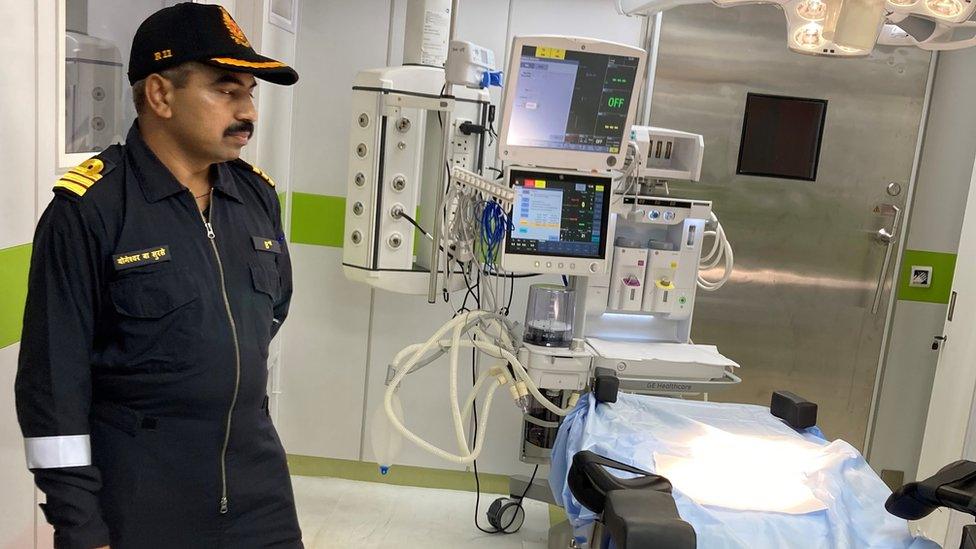
The ship's medical facilities include a hospital and operating theatres
With 76% of the ship's parts sourced indigenously - around 500 Indian firms were roped in - both the navy and the Cochin Shipyard say the Vikrant's cost is an investment in boosting India's defence capabilities.
The shipyard is now investing in a new dock - to be ready by 2024 - to build India's next aircraft carrier, Mr Nair says.
"I hope that the approval for building the next carrier comes in. If it does, we will be ready for much faster deliveries."

Read more India stories from the BBC:

- Published17 June 2022

- Published25 June 2022
